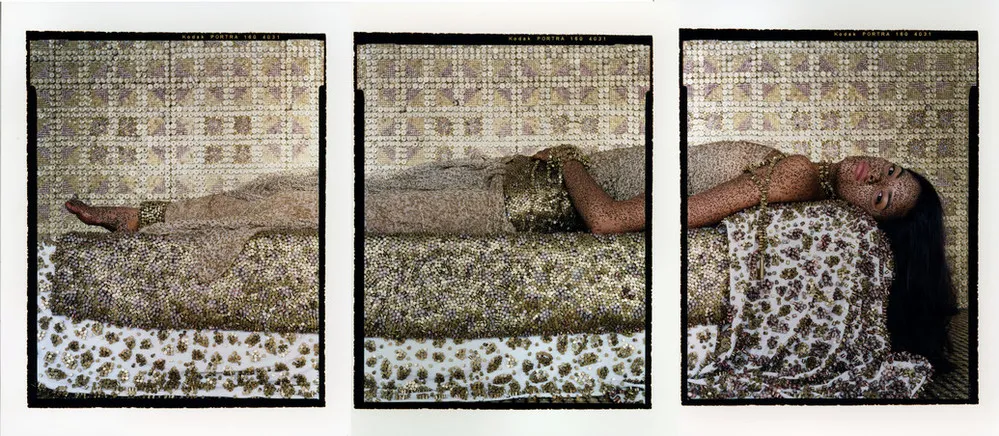Bullets Revisited #3
Close up of Bullets Revisited #3


Lalla Essaydi’s Bullets Revisited #3 beckons viewers with its large scale and shimmering opulence, as well as the confident gaze of the reclining woman. The image appears beautiful and decorative, but the artist’s intentions are more complex. With proximity, the golden patterns of the walls, floor, and furniture resolve into cut-and-polished bullet casings, which also adorn the figure’s clothing.
Essaydi used bullet casings to symbolize violence and express her concern about the expansion of restrictions on women following the Arab Spring, a widespread revolution lasting from 2010 to 2012. She said, “Women have been at the forefront of the uprisings…and as soon as these new regimes took hold, women were subordinated anew.”
Essaydi challenges gendered boundaries by veiling her figures in calligraphy, which she applies by hand using henna. Historically, calligraphy is a male art form, whereas henna painting is a female tradition. The artist’s own stream-of-consciousness text gives a voice to her subjects.
The photograph evokes images of seductive female nudes that featured prominently in 19th-century Orientalist paintings. Such works beguiled Western viewers into believing that the exotic fantasies portrayed were scenes of real life in the Middle East and North Africa. Here, Essaydi subverts Orientalist traditions by segmenting the figure into three parts, disrupting viewers’ voyeuristic engagement. The black borders with the Kodak logo asserts the “image-ness” of the work, reminding viewers that the scene is fictional.